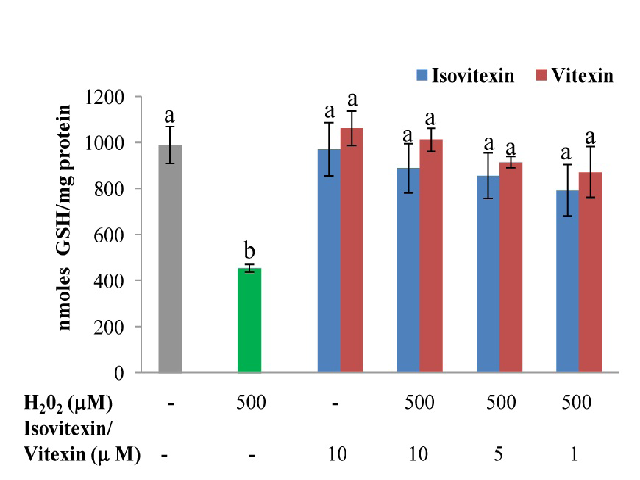Comprehensive Assessment of Antioxidant Activities of Apigenin Isomers: Vitexin and Isovitexin
DOI:
https://doi.org/10.5530/fra.2016.2.5Keywords:
Antioxidant enzymes, Fenugreek, Flavonoids, Free radicals, Isovitexin, VitexinAbstract
Introduction: Fenugreek is known to possess anti-diabetic as well as antioxidant properties known to increase with germination. Previous study from our laboratory has reported vitexin and isovitexin as major antioxidant compounds from germinated fenugreek seeds. The present study aimed to comprehensively assesses and compare their antioxidant activity. Methods: The antioxidant ability of these compounds against various radicals was checked using standard in vitro radical scavenging assays and pulse radiolysis. Protection conferred to mitochondria against oxidative damage was assessed by measuring the levels of lipid peroxides and protein sulphydryls. Protection from hydrogen peroxide induced cytotoxicity in HepG2 cells was checked by MTT assay and by measuring intracellular ROS. Their ability to modulate intracellular antioxidant status was checked both at activity and RNA level. Result: Vitexin and isovitexin exhibited differential antioxidant activity against various radicals. Vitexin was a better nitric oxide scavenger while isovitexin scavenged superoxide radicals more efficiently. Pulse radiolysis studies revealed good antioxidant activity of both compounds against short-lived radicals and affected the formation and decay of the 2-dG transient species to the same extent. In oxidatively damaged mitochondria, lipid peroxidation was inhibited significantly by isovitexin whereas vitexin prevented decrease in protein sulphydryl content more effectively. These compounds protected HepG2 cells to the same extent against hydrogen peroxide induced oxidative insult by reducing intracellular ROS and modulating the levels of antioxidant enzymes. Conclusion: The present study clearly demonstrates differential antioxidant potential of both vitexin and isovitexin and their role in mitigating oxidative stress induced damage and maintaining cellular redox homeostasis.
Downloads
Metrics





